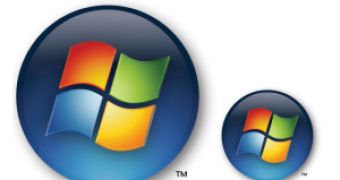32-bit and 64-bit editions of Windows Vista are not twin operating systems. While the infrastructure is identical, the two versions of the platforms are not similar down to the last detail. Users weighing carefully between x86 and x64 Vista variants should understand the differences between what each operating has to offer, in order to make a valid choice. But it should all come down to the CPU. A 32-bit process will automatically recommend the 32-bit Vista, while a 64-bit computer will only run 64-bit editions of Microsoft's latest operating system.
So will it be 32-bit or 64-bit? When choosing a system configuration think of it in terms of future and past. The 32-bit technology is old, not obsolete yet, but old; and 64-bit computing is increasingly being adopted and supported. Want to be in step with the times? Then 64-bit is the right answer for you. But what about Windows Vista?
Well, there are a few features that recommend x64 Vista over the x86 versions. While the vast majority of features are common to the two platforms, 64-bit Vista delivers an extra kick so to speak. With the x64 editions, you will also get Data Execution Prevention, Kernel Patch Protection, and Signed Kernel Mode Drivers. These three features are exclusive to the x64 editions of Vista. Windows Vista is applauded by Microsoft as the most secure Windows platform to date. Well, x64 Vista raises the standards of security even further. The three features enumerated above are nothing else than exta layer of protection.
Data Execution Prevention is a feature designed to stop buffer overflow attacks, working in conjunction with the 64-bit processor's DEP. Kernel Patch Protection is a technology created to protect the operating system's core. PatchGuard will stop all unauthorized programs, including trusted applications, from patching the Windows kernel. And Signed Kernel Mode Drivers requires all kernel-mode drivers to present a valid and legitimate signature from the developer.
Additionally, you should take into account the fact that Microsoft plans to add complete support for EFI (Extensible Firmware Interface) with 64-bit Windows Vista. EFI is a technology that will replace the ubiquitous BIOS. In this manner, Windows Vista will reach the same level as the Mac OS X Tiger which already supports EFI on Intel based Macs.
The biggest limitation on 32-bit Windows Vista is related to RAM. X86 Vista will by default go only as far as 4 GB of RAM, and will address even less, around 3.5 GB. While there are ways to increase the amount of memory on 32-bit Vista platforms, this is simply so much easier with x64 versions of the operating system. 64-bit Vista supports an incredible amount of RAM - Home basic and Home Premium editions can go as far as 8 and respectively 16 GB. But Windows Vista Business, Enterprise and Ultimate support no less than 128 GB of memory.

 14 DAY TRIAL //
14 DAY TRIAL //